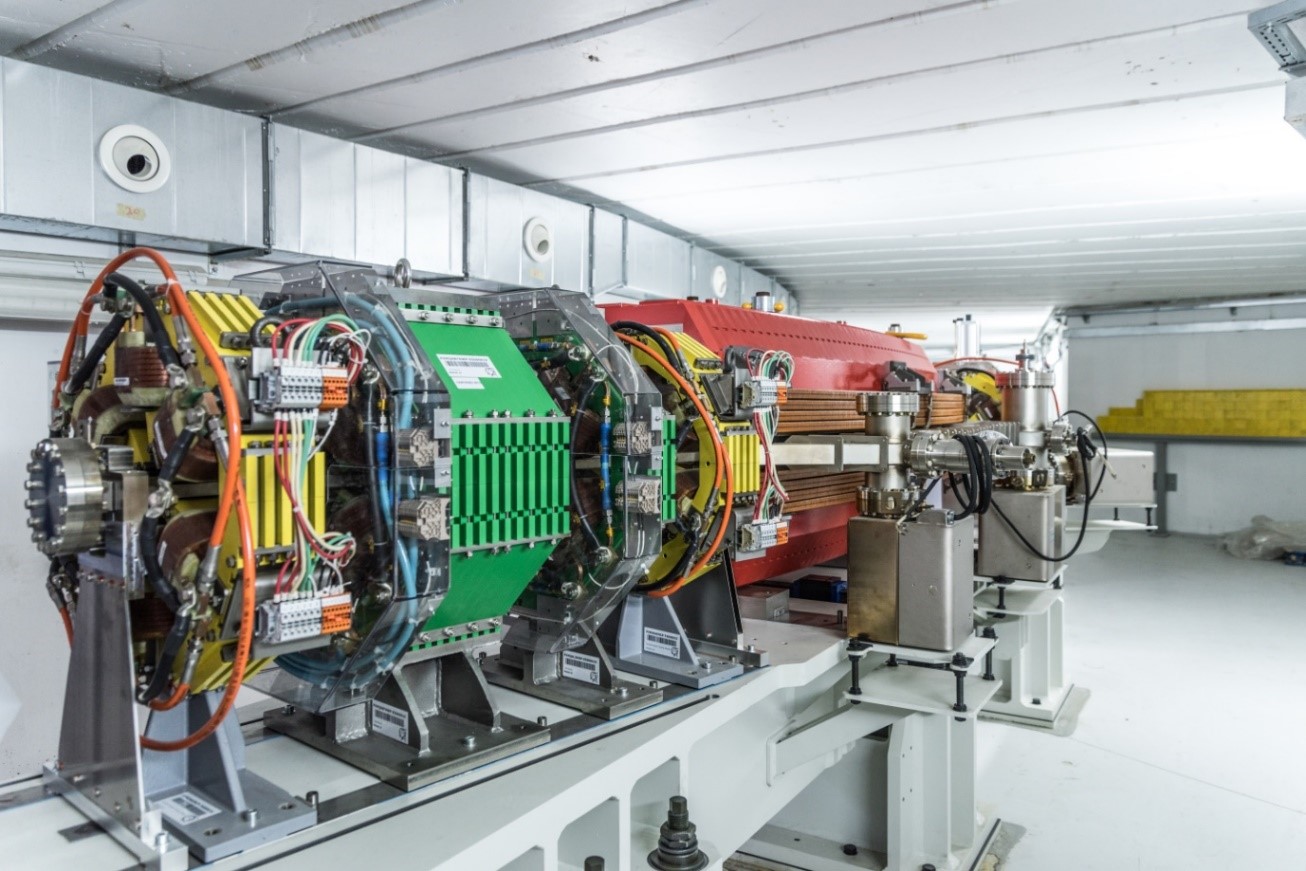The main objective of the FP7-CESSAMag (CERN-EC Support for SESAME Magnets) project was to support the construction of the SESAME light source in the Middle-East. With financial contribution from the EC, CERN’s main objective was to deliver the magnetic system and its powering scheme for the SESAME main accelerator ring, as well as to support the training of SESAME staff. Completed at the end of 2016, the project fulfilled or exceeded all its objectives.
Scientific and technical impact of CESSAMag

Section of the SESAME Main Accelerator Ring (Image credit: CERN)
Building upon SESAME studies, CESSAMag finalized the requirements and design and produced the engineering and technical drawings of the SESAME magnets and powering scheme. The first main result of CESSAMag is the production of design reports on the combined function bending magnets, on the quadrupole magnets (long and short), on the sextupole magnets with their auxiliary corrector windings and on the powering scheme. These design and engineering study reports were used as background for the technical specifications needed for tendering and can serve as reference for the construction of similar light sources.
During the tendering process, CERN made a special effort to place orders not only with experienced European companies, but also with companies based in some of the SESAME Members (Cyprus, Israel, Pakistan, Turkey), without former experience in accelerator components (except for Israel), but demonstrating potential and motivation. This was achieved through effective knowledge transfer from CERN and generated potential commercial impact in the companies trained.
All magnets successfully passed the acceptance tests at either ALBA-CELLS or CERN and their measured field quality and reproducibility from magnet to magnet are excellent, making them a reference for similar synchrotrons. Therefore, a key result of CESSAMag is the string of magnets forming the SESAME storage ring, composed of:
CESSAMag also contributed to the production of an improved magnet powering scheme: rather than procuring power supplies adapted to each kind of magnet, another approach was proposed by CERN, based on light source standards (PSI), which allows individual powering of quadrupoles and simplified maintenance by plug-and-play modules by standardizing interfaces. With this strategy, SESAME benefits from a powering strategy more powerful, flexible and robust than initially foreseen.
Following the decision to procure some components from companies based in the SESAME Members and thanks to the in-kind contribution of Pakistan, offering the assembly of 50% of the sextupoles, CESSAMag managed to deliver a more powerful and complete magnetic system and reduce the financial share that SESAME was due to contribute to the project.
Finally, CESSAMag contributed to the magnet integration and commissioning, with the goal of making SESAME fully in control of the equipment delivered by CERN.
The first beam was circulated in the SESAME main accelerator ring on 11 January 2017 and it was stored and accumulated up to 20mA in mid-February. The next step is ramping the beam and completing the RF stations and final acceleration assessment expected before the end of summer. The inauguration ceremony of the SESAME light source will take place in mid-May with the foreseen presence of high-ranking officials from SESAME Members and Observers. The first user experiments are foreseen to start in Q3.
Political and social impact of CESSAMag
A significant aspect showcasing the socio-economic impact of CESSAMag is the knowledge transfer to companies from SESAME Members and training of SESAME staff. The duration of training to staff, engineers and companies from SESAME Members amounts to about 90 person-months and the CERN personnel effort in training and knowledge transfer amounts to 16 person-months.
In the context of CESSAMag, international collaborations and agreements were established between CERN and SESAME and CERN and ALBA-CELLS; implementation agreements were formed with PAEK (Pakistan), TAEK (Turkey) and ILSF (Iran) and an informal collaboration with IAEA, which provided financial support for training and experts’ visits between CERN and SESAME. These collaborations and agreements illustrate the international and science diplomacy dimensions of the project.
Furthermore, the European Union acknowledged the science diplomacy impact of CESSAMag and made further steps in support of SESAME. Since 2015, the EU is an Observer in the SESAME Council and the EC decided to further support the training of SESAME users and staff in the framework of the OPEN SESAME (Opening Synchrotron Light for Experimental Science and Applications in the Middle East) H2020 “Policy and international cooperation measures for research infrastructures” project.
*****
This article is based on the Project Final Report.